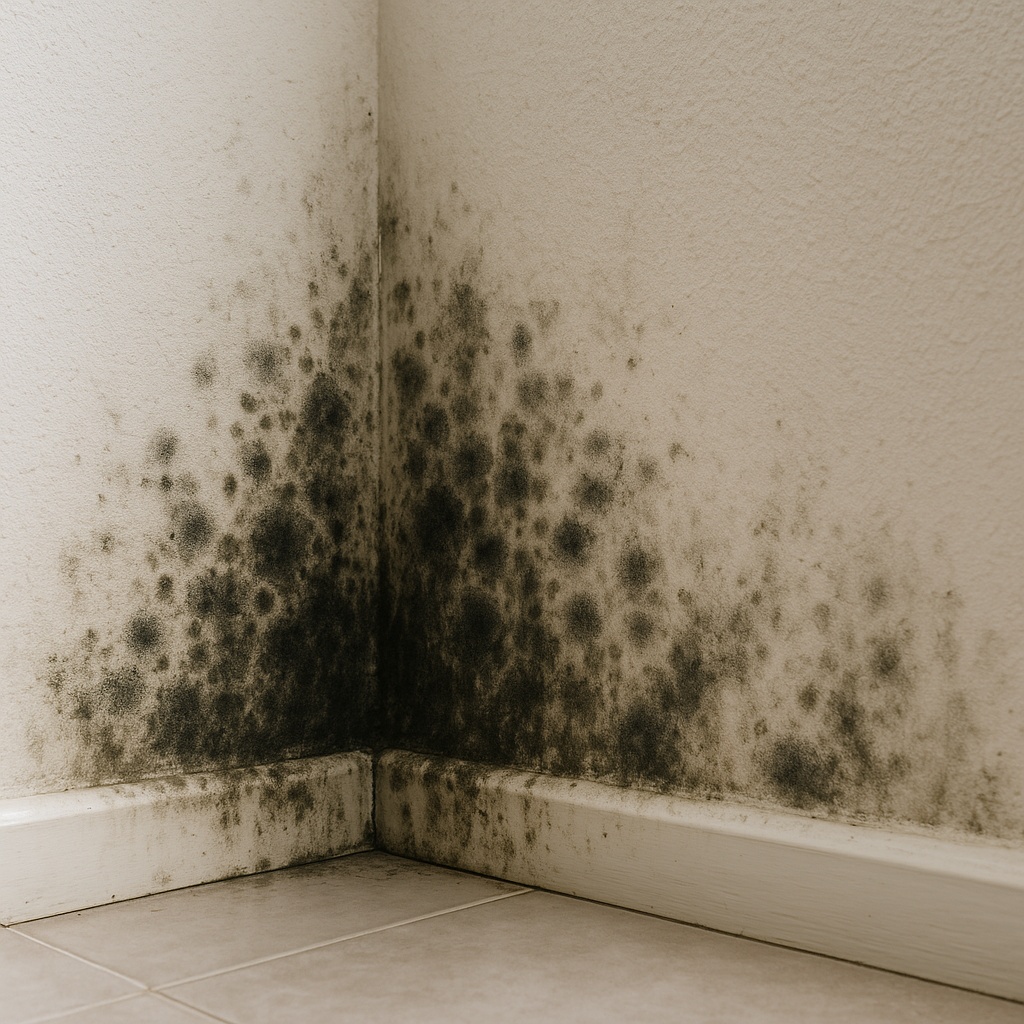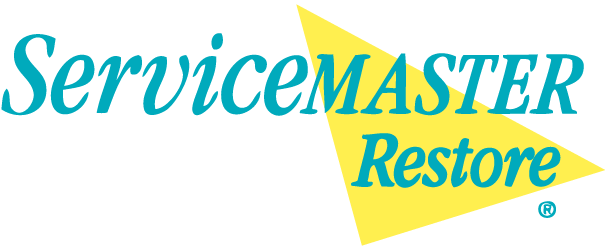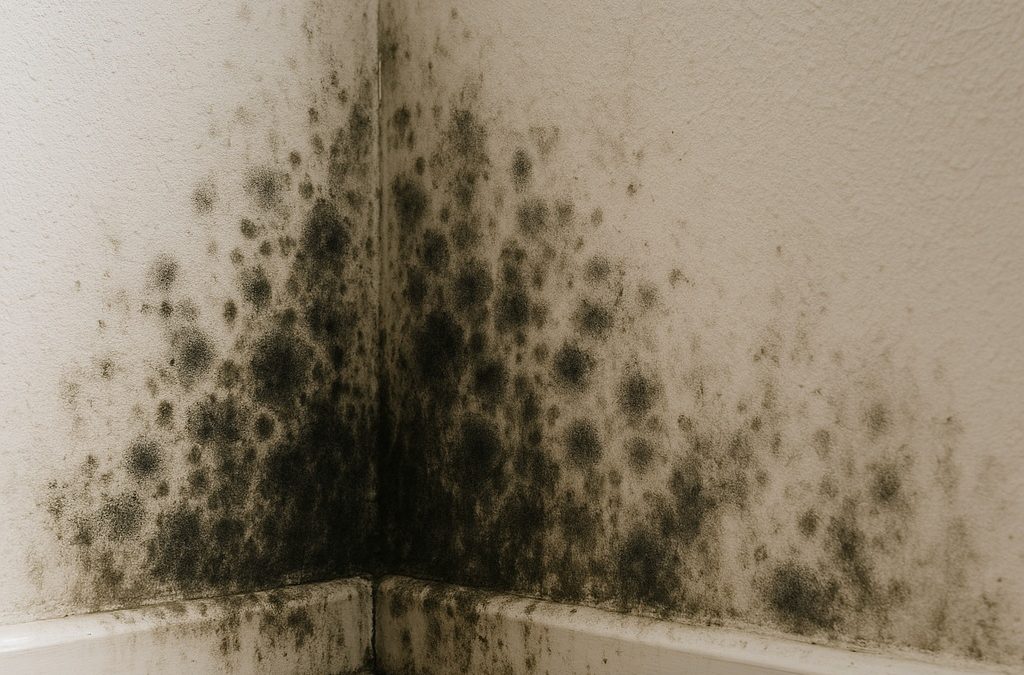
Managing mold, mildew, and moisture in your home can be especially challenging, particularly in humid climates. Indoor environments are often 2 to 5 times more toxic than outdoor ones, with mold being the leading contributor to this toxicity. Prolonged exposure to mold can lead to various health issues, including respiratory problems like wheezing, coughing, and even asthma.
Mold often hides in plain sight, going unnoticed for months in areas like bathrooms, kitchens, crawlspaces, basements, and garages. It can also grow within walls, ceilings, or your HVAC system if not properly maintained. Beyond health risks, unchecked mold can cause significant structural damage to your home.
In this article, we’ll cover how to detect mold, the conditions that encourage its growth, and effective strategies to prevent it from taking over your home.
How do I detect mold in my home?
Mold is easy to spot due to its distinct appearance. It can be various colors, including black, red, green, or blue, and can have different textures, such as fuzzy or slimy. Mold also produces a strong, unpleasant odor that’s hard to miss.
Excess humidity is a key trigger for mold growth, and if it spreads, it can cause significant damage to your property. Acting quickly is essential, professional removal ensures mold is eradicated before it causes further harm or costly repairs. Addressing the issue early not only prevents damage but also protects the health of your loved ones. The sooner you handle mold remediation; the sooner you can restore your home and peace of mind.
What are the ideal conditions for mold?
Mold thrives in the right conditions that include heat, humidity, and a food source. The ideal temperature for mold growth is between 77- and 87-degrees Fahrenheit, with humidity levels ranging from 62% to 93%. Mold feeds on organic matter, allowing it to grow and spread rapidly.
Various types of mold can invade your home, including Alternaria, Aspergillus, Chaetomium, Cladosporium, Fusarium, and many others. Black mold (Stachybotrys chartarum) is particularly toxic and can cause serious health issues. Regardless of the type, it’s essential to address mold growth quickly to prevent health risks and structural damage to your home.
How to Prevent Mold in Your Home
While mold can be removed once it appears, prevention is always the best approach. Controlling humidity is key, as mold and moisture together create a harmful combination that can damage your home’s structure and threaten your health. Here are some effective ways to keep mold out of your home:
- Invest in a Dehumidifier: A dehumidifier is a powerful tool for controlling humidity and preventing mold growth. It removes excess moisture from the air and is especially effective in high-humidity areas like basements, bathrooms, and laundry rooms. Choose the right size for your space and position it in areas prone to dampness.
- Ensure Proper Ventilation: Good ventilation is key to reducing humidity. Install exhaust fans in your bathroom and kitchen, and open windows whenever possible to allow fresh air to circulate. For attics or crawl spaces, consider adding vents to promote better airflow.
- Repair Leaks and Cracks: Leaks or cracks in your foundation, walls, or roof can lead to excess moisture. Regularly inspect and maintain your home for water damage to address these issues promptly, keeping your space dry and mold-free.
- Monitor Humidity Levels: Use a humidity monitor to keep track of indoor moisture levels. Aim to maintain a range of 30–50%. If levels consistently exceed this range, take steps to reduce the excess moisture.
- Use Mold-Resistant Materials: During renovations or remodeling, choose mold-resistant materials such as drywall, paint, and insulation. These materials offer an added layer of protection against mold growth.
- Maintain a Clean and Dry Space: Keeping your home clean and dry is crucial for preventing mold. Immediately dry any wet areas, especially in kitchens and bathrooms. Pay extra attention to areas like grout lines, windowsills, and shower curtains where water tends to accumulate.
- Use a HEPA Air Filter: A HEPA (High-Efficiency Particulate) air filter captures mold spores, pollen, and other particles to improve air quality. These filters are commonly found in air purifiers and vacuums, and they are also used in medical facilities to reduce airborne contaminants.
Implementing these steps can help you create a cleaner, healthier home environment while effectively preventing mold growth.
Professional Mold Removal
Mold, mildew, and moisture don’t have to take over your home. With the right preventive measures, like controlling humidity, improving ventilation, and staying proactive with maintenance, you can protect both your property and your health. By understanding the conditions mold thrives in and taking early action, you can create a safer, cleaner indoor environment for you and your loved ones. Don’t wait for mold to become a costly problem, start implementing these strategies today and enjoy the peace of mind that comes with a mold-free home.
While prevention is the first line of defense, some mold problems require more than DIY solutions. If you suspect mold is growing behind walls, in your HVAC system, or spreading beyond what you can safely manage, it’s time to bring in the experts. Our mold remediation professionals at ServiceMaster S&R Systems have the tools, training, and experience to locate hidden mold, eliminate it at the source, and help prevent it from returning. Don’t let mold compromise your health or damage your home, contact our trusted mold remediation specialists today and take the first step toward a cleaner, safer living environment.

